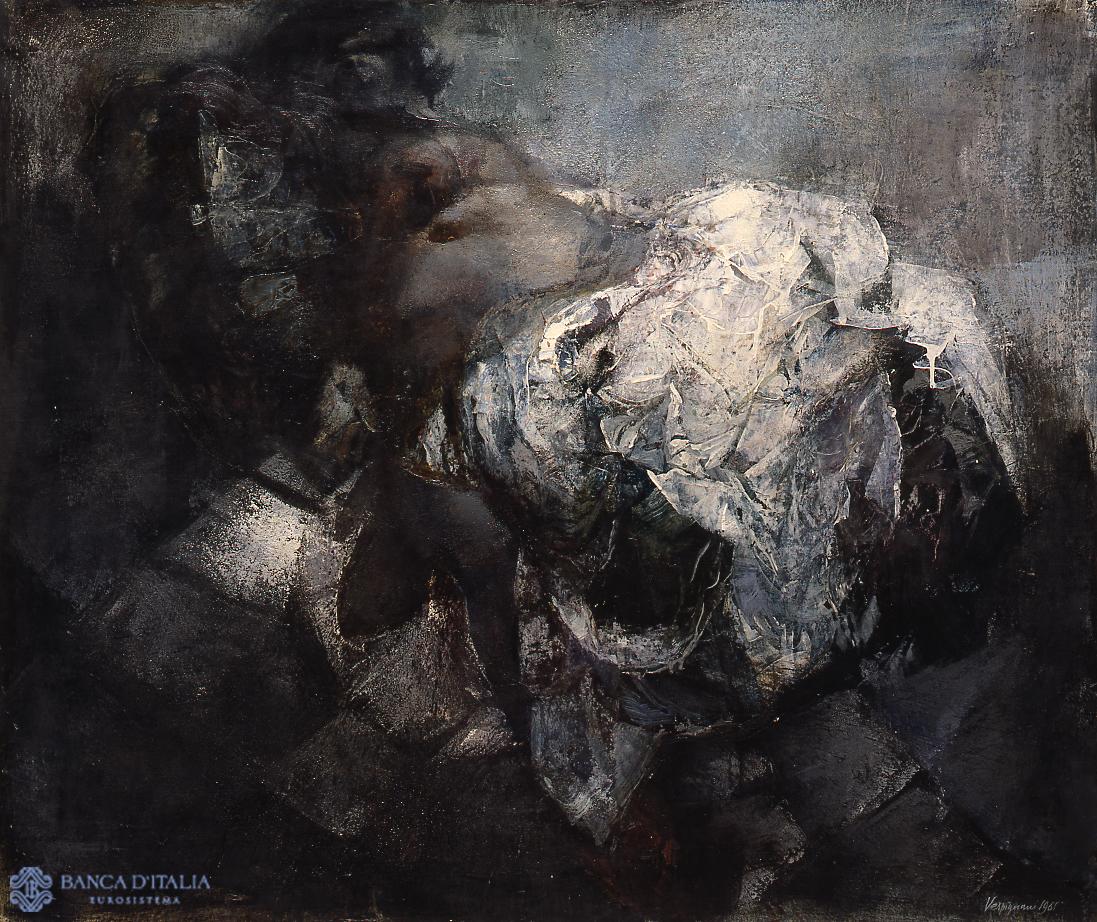Renzo Vespignani (Rome 1924–2001) began to paint during the German occupation of the Italian capital, guided by the intent to show, in a crude and direct way, the reality of the landscape of the city’s urban periphery, among the desolation of the suburbs and the ruins left by the aerial bombardment.
Some artists painting in Rome, such as Ziveri and Bartolini, influenced Vespignani’s early work to a degree, but it was in the direction of German expressionism, that of the Berliners Grosz and Dix, that the artist first reached maturity. At the same time, in his paintings of the 1940s, in which forms dissolve into an intense and gloomy magma, there is the suggestion of an anticipation of the informal art which was to exercise its widest influence in the 1950s.
From the 1960s on, he tainted the style of the 19th-century Italian realists with the decadentism of the late 19th century and English-style pop art in a completely original mix. His work as an engraver and lithographer is also worthy of note.
Vespignani was active as an intellectual in politics and cultural organization, dialoguing with Pasolini and other Italian intellectuals of his generation. He was also a set designer, working with directors like Elio Petri, and an illustrator of literary texts.
Renzo Vespignani
Renzo Vespignani (Rome 1924 - Rome 2001)
20th century AD


